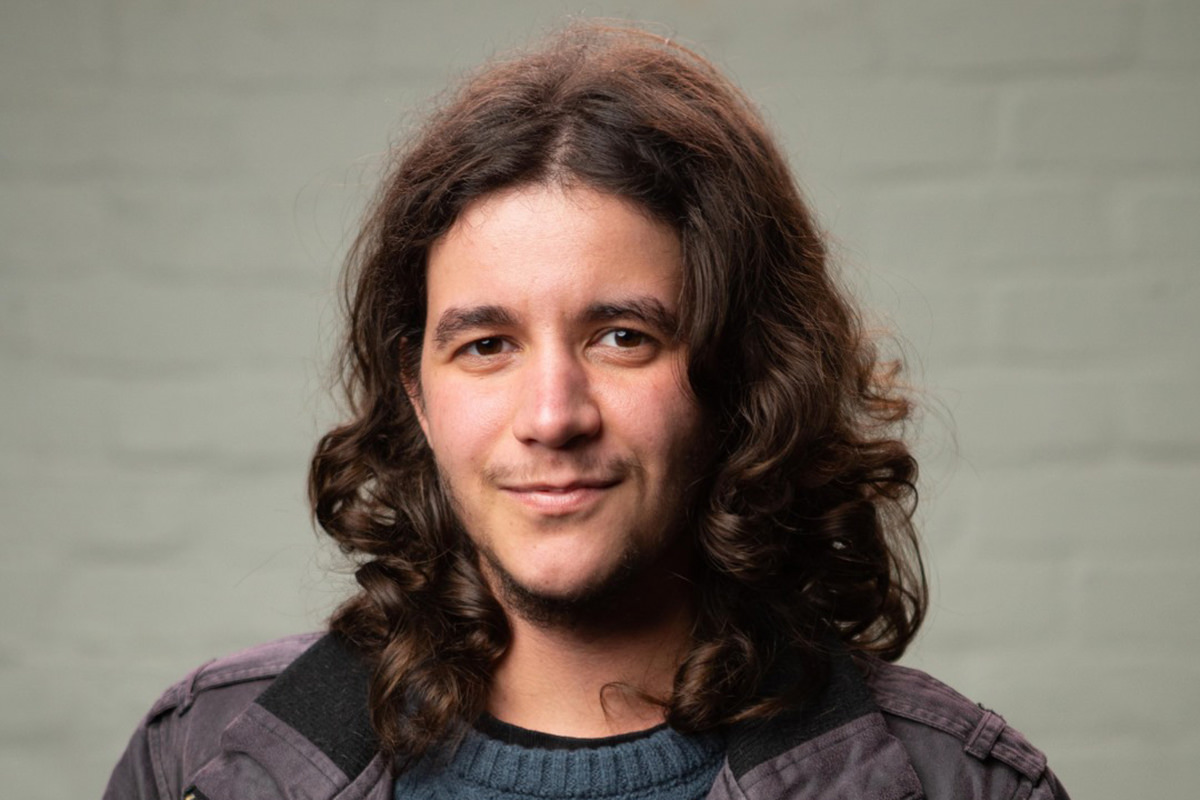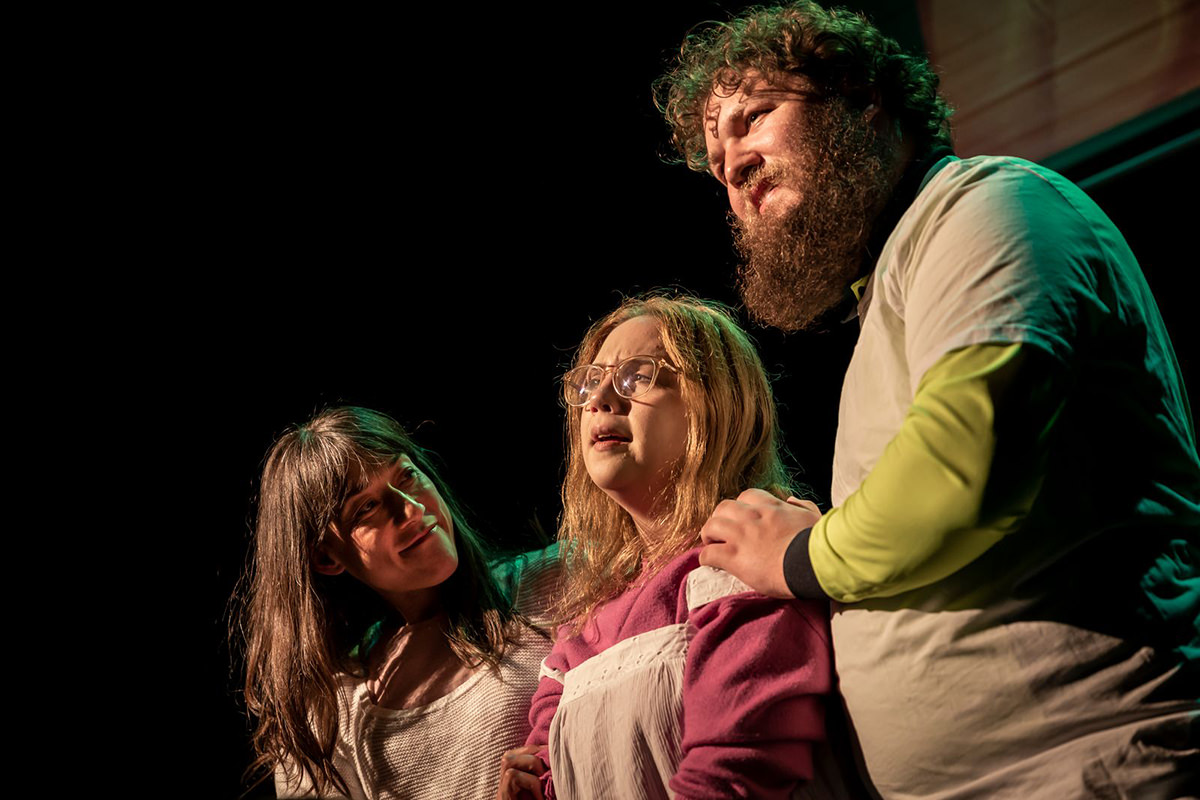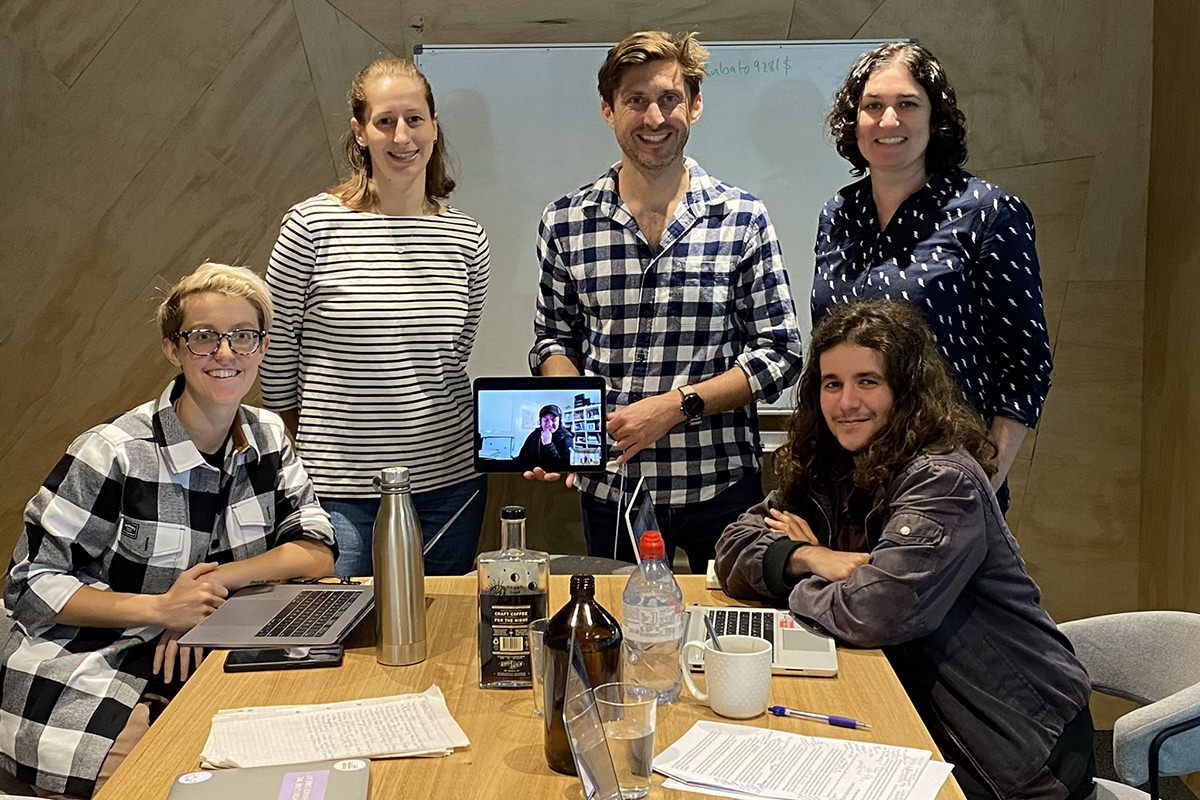Authentic Storytelling – Oliver Ross: challenges and opportunities for trans creatives
From casting to the pressures of visibility, Oliver Ross hopes to open up discussions around the experiences of trans and gender diverse creatives.
 Oliver Ross (Photo credit: Ben Sengsouvanh)
Oliver Ross (Photo credit: Ben Sengsouvanh)
In the Authentic Storytelling series, members of the Australian screen sector share their thoughts on why authenticity is important, challenges they have faced, and how the industry can do better. Subscribe to Screen Australia’s newsletter for additions to the series.
Passionate about trans and neurodiverse storytelling, Oliver Ross has worked on over 100 creative projects across film, theatre and advocacy as a production, costume & lighting designer, writer, festival screener and producer. Focusing on character, world-building and audience reception, he was selected as one of 11 creatives for Screen Australia's Developing the Developer in 2019, and trained in story development in musical theatre (The Breath in Between with Eleven O Clock Theatre) and film (Untapped with Australians in Film, and Originate with SBS, Film Victoria and Arenamedia). Oliver worked in rough cut consultancy on feature The Dry through Arenamedia, committee work with MEAA & the Equity Diversity Committee, and design for seasons at La Mama, Melbourne International Comedy, Melbourne and Adelaide Fringe and Midsumma. He's currently writing for queer web-series Wicked Women and pre-screening with Mardi Gras & Queer Screen Film Festivals. He also freelances as a designer and works as a project coordinator for Transgender Victoria and the Department of Premier and Cabinet's peer support program, which supports over 80 trans and gender diverse community groups.
Taking part in Screen Australia's Developing the Developer back in 2019 in Sydney, I realised that it was the first time I'd discussed trans storytelling as the only trans person in the room - and how uncommon that still was to have gotten the chance to do.
I sometimes wonder, five, ten, twenty years ago, what it would have taken to be in the room at all.
Working in queer theatre before exploring film, I got involved in arts advocacy a few months after I transitioned. With discussions around trans identities still being so public it’s a common overlap, as underrepresented and marginalised creators often end up advocating for both themselves and their communities.
For trans and gender diverse creatives, the importance of authentic storytelling is entwined not only through the whole production process, but in how the community is seen in broader society. While both cast and crew can often face challenges onstage and off, the growing support means rising artists have opportunities with an eager audience and the chance to tell authentic stories with a huge amount of creative freedom.
***
It's been incredible to watch more trans and gender diverse actors telling their own stories, whether through coming out in their career or navigating it from early in their career, and to see discussions around casting change. While authentic casting is becoming increasingly common, discussions around it can still be complicated when many factors come from beyond the industry and tie into ways that trans people have often been perceived. For example, in contrast to gender blind or gender swapped casting, a cis person playing a trans person of a different gender (e.g. a cisgender woman playing a transgender man) has historically been seen not as gender swapped casting, but the default way to portray a trans person. When transphobia is often rooted in the idea that trans people are pretending or tricking people, it can be tricky for even well-intentioned stories to be told if a trans character, dismissed as a man acting as a woman, is portrayed by a man acting as a woman. I sometimes think of the focus on trans actors playing trans roles as being less similar to gender blind casting, and more like roles such as Juliet and Lady Macbeth getting to be played by women after only men were allowed onstage.
Having authentic experiences can create a different starting point for a character, especially around subjects like transitioning that can dominate stories. When identity is already built into casting, it can make it easier to explore other elements of a character rather than having them fully defined by it. As there can be a pressure to represent a community through your own experience, having multiple people with lived experience on a project can also be a way to bring authenticity without it becoming autobiographical. I recently got to work as a lighting designer as part of a stage show at La Mama called Breeders, exploring the story of an autistic family through a predominately neurodiverse cast and crew. As an autistic person it was so incredible to see how everyone's understanding of both their characters and themselves evolved when hearing everyone else's stories, and slowly opened up the conversations we were comfortable having. And with the impact of underrepresented stories often being felt quickly and personally, it can be easy to feel a sense of protectiveness and caution for them.
 Lighting design for Vanessa Di Natale’s Stella Young Award winning play Breeders at La Mama (Photo credit: Darren Gill)
Lighting design for Vanessa Di Natale’s Stella Young Award winning play Breeders at La Mama (Photo credit: Darren Gill)
For both trans stories and trans creatives, it’s often almost impossible to be viewed in a creative vacuum, because showing a trans person existing is still not a neutral statement. With many trans people going through a period of struggling to picture a future for themselves, seeing ourselves on screen can be moments of realisation, affirmation and hope. And with family and community acceptance and support being one of the biggest factors combatting the terrifying high rates of depression, homelessness and suicide, having stories shared with the broader community can have a powerful effect. It’s an effect that is recognised by industries such as healthcare, government and community groups, who often support queer festivals or host screenings and interviews. Visible trans people, especially in public roles above the line, often end up educating and doing advocacy work both on set and in their fanbase, as they're often people's first introduction to a gender diverse person. But that visibility can very easily turn both their projects and themselves as creatives into targets, especially if the work is aimed at a broad audience or released at the same time as changes in policy or social movements around trans rights or the wider LGBTQIA+ community.
While changing drastically in the last few years, the relationship between trans people and the media can still often be complicated. With decades of people growing up seeing transgender people as only tragedies, jokes, or nightmares, at times bad representation can be more detrimental than no representation at all. While some of these tropes still linger in film, they're also felt in audience reception. It can be a strange feeling hoping for a film to reach an audience and gain recognition, while also bracing yourself for the backlash that you know will come - especially when it’s often aimed not at the film itself, but directly at the lives of the cast and crew.
While it's been incredible to see the amount of initiatives supporting and promoting underrepresented creators, spearheading stories about your own identity isn't always something that is easy or safe to do. Coming out is an ongoing, lifelong process that varies from situation to situation, but visibility can come at the cost of the option of privacy. In industries centred on relationships and building a profile, challenges for the cast are often mirrored for gender diverse crew, despite having long histories in behind-the-scenes roles in industries such as gaming, live music and technical theatre.
On sites like IMDb, people can change their account name but all previous credits can't be adjusted, meaning filmmakers who transition later in their careers have to make the choice to either start over again or have their birth name visible, which many find distressing and takes away the choice of how public they would like to be. Similarly, invoicing as a contractor can be tricky if someone still has all their ID and payment details in their birthname, but hasn't been able to gauge if it's safe to come out to the production team. Helping people with things like pronouns (especially less gendered ones like they/them or neopronouns) can also be particularly difficult for early career artists worried about alienating potential collaborators.
A lot of challenges, especially around admin, aren't unique to film, and they vary from person to person. Often the most important thing is being open to learning and growing; it was great to get the chance to talk to Showcast as part of the TGDNB (transgender, gender diverse and non-binary) sub-committee about adding different gender options when updating their website. Authentic storytelling can come from so many parts of the industry, and what’s on camera is often only part of the story - the conversations behind it build its bedrock.
 Writing room for Kate Lefoe and Hayley Adams’ queer webseries Wicked Women
Writing room for Kate Lefoe and Hayley Adams’ queer webseries Wicked Women
Discussions around comfort levels and wellbeing on set feel like they’re becoming increasingly interwoven, both for underrepresented creators and the broader industry. For example, many trans masculine and nonbinary people wear chest compression garments, binders. They can be something to factor into wardrobe and microphone placement, but so are varying body types and actors having different comfort levels and boundaries around their bodies. Certain intensities and angles of lighting can clash with them, but there's also a need for more training and experience both in lighting and make-up tailored for darker skin. People wearing binders choose how to manage them with long, physical hours shooting, but there's broader discussions to be had around accessibility and the risks of fatigue and burnout on and off set.
For a lot of challenges, potential options for starting points can be found in different parts of the film industry. Some stories offer unique spaces to explore casting; for example, while stage shows of Priscilla Queen of the Desert still almost always cast cisgender men in trans roles, but the option is there to look at a more authentic casting pool. Different genres also offer starting points, especially those drawing in an audience with a new cast. YA adaptations in particular often prioritise younger, unknown actors to be able to define a role, while also being able to be less risky to produce both through their established, passionate fanbase, with more experienced actors coming on in interesting supporting roles.
Adaptation in particular has so much room to be explored, both with reimagining characters and bringing current stories by trans creators to screen. Outside of documentaries, the majority of trans stories are currently told in short form, with a range of web series and short films that come with festival runs and established audiences to build on. Cities such as Melbourne often have huge queer theatre scenes, and the amount of books by and for communities continues to grow across a range of genres.
And the amount of trans creatives comfortable telling their stories has skyrocketed. Working in project coordination at Transgender Victoria, it’s been incredible to see the amount of creatives, even when the funding isn’t specific to arts. Across the 80 trans projects we’ve been able to support, there’s been hundreds of artists across mediums and disciplines, including four different writers’ groups. Similarly, screen initiatives like Originate and Untapped draw record numbers, especially when reaching out to marginalised artists in different mediums and building their experience in film. If the last few years have been an explosion of opportunities for training underrepresented creators, then I’m hopeful that the next few will be seeing the beginnings of the stories they’ll produce.
Authentic trans storytelling is at a unique point in its life where audience demand is far bigger than the amount of content produced, to the degree that a majority of the new trans narrative features could still be on the international festival circuit at the same time. For audiences often tired of tragedy, there's a hunger for authentic and varied stories that can transcend trends, genre, or the need for large budgets and high-profile casts.
Recent stories have been able to show that authentic storytelling can drive innovation both on screen and in production. Recut from the first season of their webseries, recent Aotearoan feature Rurungi follows a trans man returning home to rural New Zealand for the first time. With authentic casting and the writer doubling as co-producer, it was able to explore the weight of transphobia without giving it a voice, and finding ways to centre the communities in the story, from mentorships to multiple consultant groups with the power of veto. Australian series First Day recently announced its second season centred on a young trans girl starting high school, even as discussions around trans children remain some of the most controversial to have.
Months into its feature release, Rurungi continues its festival run after being picked up by Hulu, and with a string of awards, First Day has distribution deals in countries across Oceania, Asia, Europe and America. And as someone who didn’t see any trans characters until after I’d transitioned, the thought of getting to grow up alongside these characters is something I could never have imagined.
***
Where media, advocacy and personal lives mix, authentically telling the stories of marginalised and underrepresented communities, especially your own, can be complicated. It’s a balancing act of fighting for visibility and the right to privacy above and below the line, and in acknowledging consequences without being paralysed by them. But the talent is there, growing. The storytellers are there, fighting. The audience is there, waiting. And we always have been.
The views and opinions expressed in this article belong solely to the author and do not necessarily reflect the views or policies of Screen Australia.

What to read next
Writer, director and producer Julie Kalceff on authentic casting, working with communities and learnings from First Day.
12 May 2021
Julie Kalceff